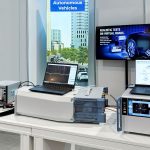Technology company Fotech has used Nvidia’s GPU-accelerated computing and software solutions to process high volumes of data needed for its distributed acoustic sensing (DAS) technology.
Fotech’s DAS technology turns a fibre optic cable into thousands of sensors that detect disturbances along the length of the fibre. Light pulses are sent each second, and the reflected signals monitored for patterns. When acoustic or vibrational energy — such as that created by digging, walking or driving — creates a strain on the optical fibre, this changes the reflected light pattern. These changes are then subjected to analysis algorithms and processing techniques to identify and categorise the disturbances. Each type of disturbance has its own signature, so the technology can determine in real time what happened where and when. Such valuable information is needed in many sectors, including telecommunications, power infrastructure and security.
However, one of the challenges Fotech needed to solve is ensure the high accuracy of its technology.
“We need to process up to 600MB of data per second, which is an exceptionally large volume that would take too long to transfer to the cloud,” said Steve Cammish, Fotech’s Chief Technology Officer. “In order to detect with the sensitivity required, and cover the distance of fibre under monitoring, we require intense edge computing.”
Fotech then used Nvidia’s Jetson edge AI platform.
“The Nvidia Jetson platform and CUDA libraries are so important for us, since they allow us to process the data in parallel and help us detect the different types of events, such as spade strikes or footfall. Once we know these events, we have much lower data rates, and then we are able either process them on the device or in the cloud, to create alarms,” said Cammish.
In addition, the accuracy of the events has been further improved by implementing new data flows for machine learning.
“The current approach requires significant manual tuning of thresholds and frequency bands to classify disruptions like walking, digging and vehicle movements, all of which takes time,” said Cammish. Here, Fotech used Nvidia’s TensorRT, a software development kit for high-performance deep-learning inference.










